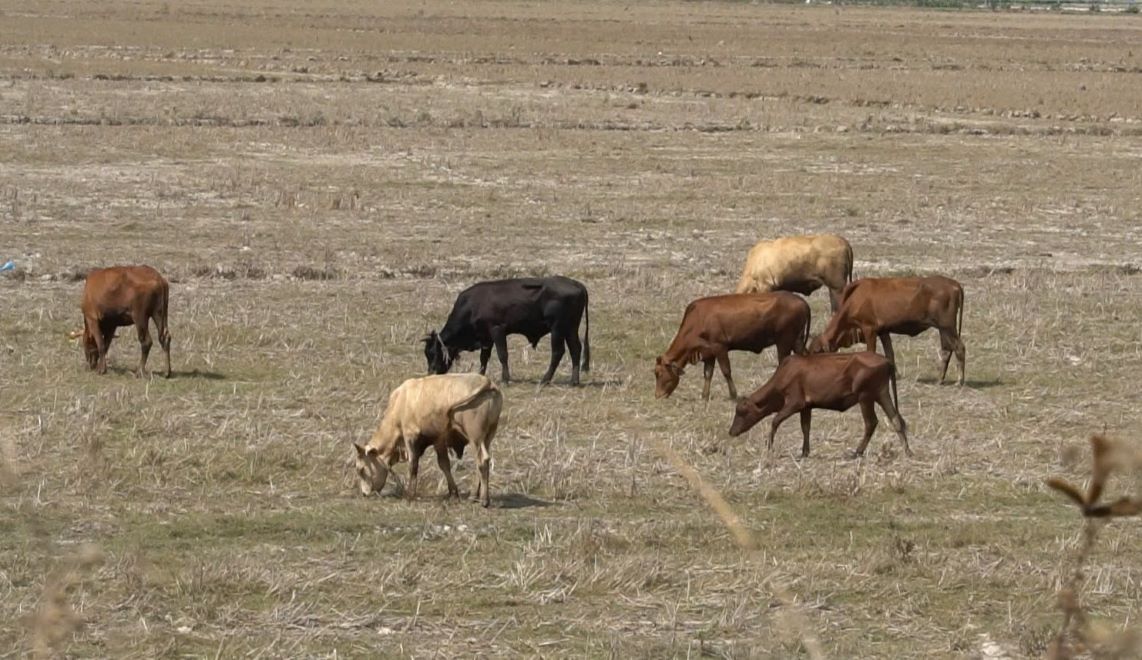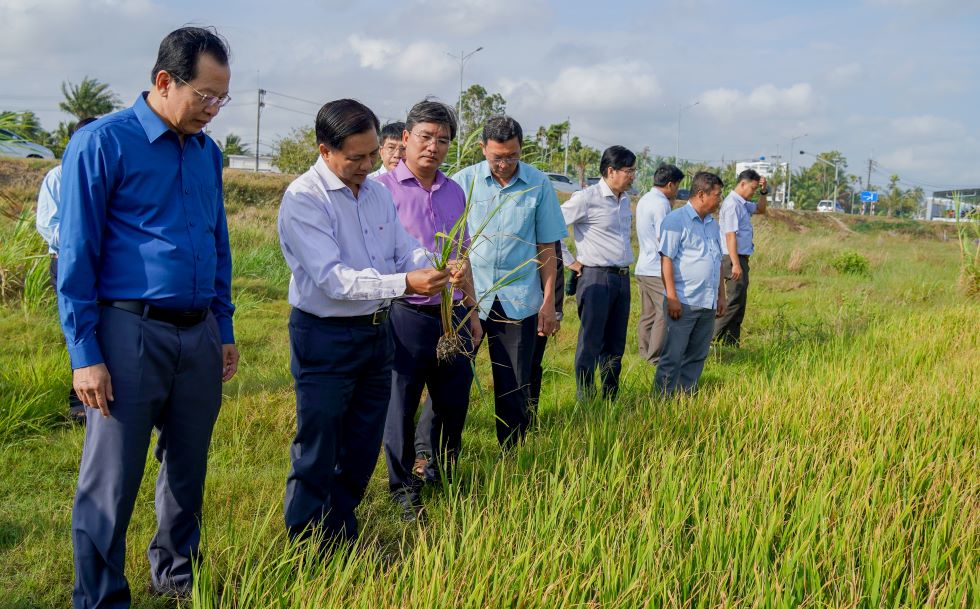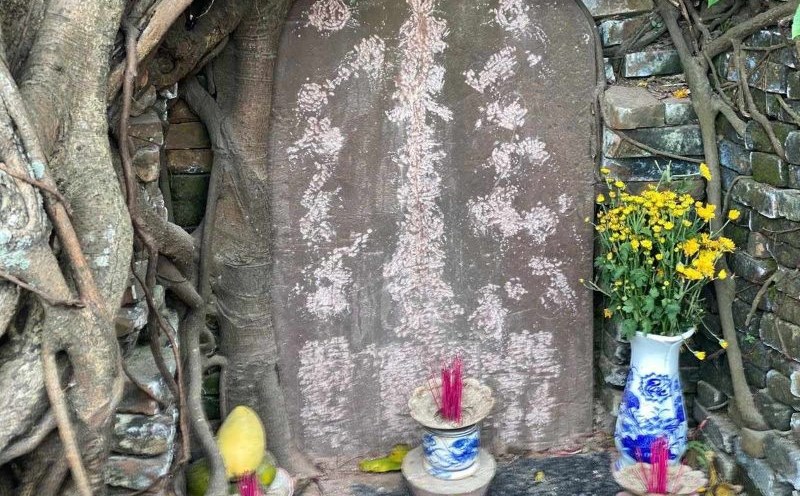Leaving vacant land - a "salt-taking" solution
After the 2024-2025 Winter-Spring rice crop in Tran De district, Long Phu (Soc Trang province) are fields with bare roots or land that has been converted to growing vegetables instead of yellow rice fields due to lack of water, drought, and salinity intrusion in previous years.

Mr. Tran Van Diem - a farmer in Dai An 2 commune (Tran De district, Soc Trang province) - said that in 2024, seeing rice prices increase after harvesting Winter-Spring rice, he rented 1.7 hectares of land to grow late winter-spring rice (rice crop 3). Produced right at the right time, prolonged saline intrusion caused the rice to turn yellow, with a deposit, and bloom, but the grains were not full of rice.
"I failed that time. This year, I decided not to grow rice anymore but only plow and dry the soil until it rains before sowing as recommended. This method not only helps reduce damage caused by drought and salinity but also helps the soil recover nutrients, said Mr. Diem.
Similarly, 1.6 hectares of land of Mr. Chau Rach Ca Na in Lieu Tu commune (Tran De district, Soc Trang province) this crop were also left vacant after the failure of the 2024 crop of three rice crops.
"Although the authorities have recommended not to grow rice in the third crop, last year I risked production. As a result, the rice died due to lack of water. Learning from experience, this season I left vacant land to grow grass for the cows to feed, saving money on straw and not worrying about losses," said Mr. Ca Na.

In Long Phu district, the locality with the largest area for growing annual 3-crop rice in Soc Trang province, the number of sowing in this crop has also decreased sharply.
According to the People's Committee of Long Phu district, the salinity intrusion situation in 2025 is complicated and will arrive earlier than the same period. The locality has proactively promoted and advised farmers not to produce rice in the third crop. To date, only more than 1,780 hectares of third-crop rice have been planted, a decrease of more than 4,250 hectares over the same period.
No damage has been recorded
According to the Department of Agriculture and Environment of Soc Trang province, despite the complicated situation of saline intrusion and high tides of salinity intrusion, the situation has been controlled thanks to good forecasting and timely operation of salinity sluices.
Up to this point, the province has not recorded any crop areas affected by salinity intrusion. The third crop is currently in the stages from the branching to the blooming stage and is expected to be harvested in May. The amount of fresh water on canals is still enough to supply rice production areas.

Mr. Tran Van Lau - Chairman of Soc Trang Provincial People's Committee - said that the locality has promptly declared an emergency situation on salinity intrusion prevention and control and implemented many solutions for construction and non-construction, such as propagating people to dredge canals for freshwater storage, environmental monitoring, and proactively taking water into the fields.
"After many years of preventing drought and salinity, local farmers have accumulated a lot of experience, so they are very proactive in planting on the right season and have reasonable solutions to store fresh water. Initially, some areas of rice in the third crop were affected, but there was no significant damage. Maybe when harvesting, the rice yield is not high but not as white as in previous years," said Mr. Lau.
During the 2024 drought and salinity, Soc Trang recorded over 1,000 hectares of third-crop rice damaged by drought and lack of water, mainly concentrated in Long Phu and Tran De districts.











